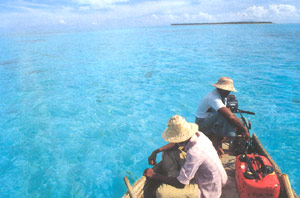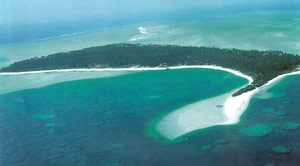|
|
Indianvisitoffers complete tourist information on the Indian state of Kochi, tourism in Kochi India, hotels in Kochi India and packages for Kochi India.
|
|
Kochi
Kochi � Facts and Figures
| Area | 8,700 sq km |
| Population | 1,600,000 |
| Languages | Malayalam and English |
| Best time to visit | December to May |
| STD code | 0484 |
Kochi � Introduction
Kochi, whose colonial name isCochin , is a pulsating city located on the south-western coast of the Indian peninsula in the scenic and prosperous state of Kerala.
Kochi � Location
 Popularly referred to as the Queen of the Arabian Sea, Kochi is one of the chief seaports of the country in the district of Ernakulam, about 220�km north of the state capital, Thiruvananthapuram. The city can be considered as the commercial as well as industrial capital of Kerala. The city extends from latitude 9�58� in the North to longitude 76�17� in the East.
Popularly referred to as the Queen of the Arabian Sea, Kochi is one of the chief seaports of the country in the district of Ernakulam, about 220�km north of the state capital, Thiruvananthapuram. The city can be considered as the commercial as well as industrial capital of Kerala. The city extends from latitude 9�58� in the North to longitude 76�17� in the East.
Kochi � Climate
Owing to its position very close to the sea, Kochi has a temperate climate, with heavy rains during the monsoons, i.e. the months of June �August. Winter commences from December and carries on till February. In summer, the temperature soars to a maximum of 35�C and touches a minimum of 25�C in the winters.
Kochi � History
 Though Cochin had been an important gateway in the past, it started serving as a natural harbor later. Muziris (present-day Kodungalloor on the mouth of the Periyar River) at 40 km north of Cochin, was the hub of trade with Rome in products like pepper, pearls, fine silks, oil, betel, muslin, cotton, honey, cinnamon leaf, black pepper, tortoise shell, ginger grass, and indigo.
Though Cochin had been an important gateway in the past, it started serving as a natural harbor later. Muziris (present-day Kodungalloor on the mouth of the Periyar River) at 40 km north of Cochin, was the hub of trade with Rome in products like pepper, pearls, fine silks, oil, betel, muslin, cotton, honey, cinnamon leaf, black pepper, tortoise shell, ginger grass, and indigo.
The harbor was formed in 1341 A.D, when a great flood in the Periyar River silted up the mouth of the Muziris port and was eventually expelled to the history pages. In the meantime, the merchants of Muziris had already shifted to Cochin.
For ages, Cochin was the battlefield of European powers in eye of the lucrative trade on the western coast of India. The Portuguese were the first to arrive here. Two years later, the great explorer, Vasco da Gama landed in Cochin. The Portuguese built a fort in defense for their factory. Fort Manuel, or Manuel Kotta, christened after the King of Portugal, was the first fortress erected by the Europeans in India.
Extensive scientific cultivation of coconut, ginger, pepper, tobacco, fruits and cashew nut was first regularized by the Portuguese and today it is the thriving industry in this part of the country. The pineapple, for example, is still called prithichakka in Malayalam, meaning jackfruit in Portuguese. The coir industry was also hugely triggered by them.
The Dutch were the next to dethrone the Portuguese. Equipped by a laissez-faire policy and a self-set dictum of �at least a 100% profit,� Cochin saw a great revival of trade.
The British however were next to come to power.
From 1795, the British ruled the country for a hundred years and more, and they extensively developed the harbor at Cochin, the gateway of South India.
Cochin was acknowledged as a major port in 1936. There was a total reorientation of shipping and trading activities on the Malabar Coast. With its all-the-year shipping facilities, it stands as the busiest port south of Bombay. It is a passenger harbor for the United Kingdom and America in South India as well.
Log on to www.touristplacesinindia.com which gives online information on Kochi on your Tour to Kerala India.
More On Kochi
|

 Popularly referred to as the Queen of the Arabian Sea, Kochi is one of the chief seaports of the country in the district of Ernakulam, about 220�km north of the state capital, Thiruvananthapuram. The city can be considered as the commercial as well as industrial capital of Kerala. The city extends from latitude 9�58� in the North to longitude 76�17� in the East.
Popularly referred to as the Queen of the Arabian Sea, Kochi is one of the chief seaports of the country in the district of Ernakulam, about 220�km north of the state capital, Thiruvananthapuram. The city can be considered as the commercial as well as industrial capital of Kerala. The city extends from latitude 9�58� in the North to longitude 76�17� in the East.
 Though Cochin had been an important gateway in the past, it started serving as a natural harbor later. Muziris (present-day Kodungalloor on the mouth of the Periyar River) at 40 km north of Cochin, was the hub of trade with Rome in products like pepper, pearls, fine silks, oil, betel, muslin, cotton, honey, cinnamon leaf, black pepper, tortoise shell, ginger grass, and indigo.
Though Cochin had been an important gateway in the past, it started serving as a natural harbor later. Muziris (present-day Kodungalloor on the mouth of the Periyar River) at 40 km north of Cochin, was the hub of trade with Rome in products like pepper, pearls, fine silks, oil, betel, muslin, cotton, honey, cinnamon leaf, black pepper, tortoise shell, ginger grass, and indigo.